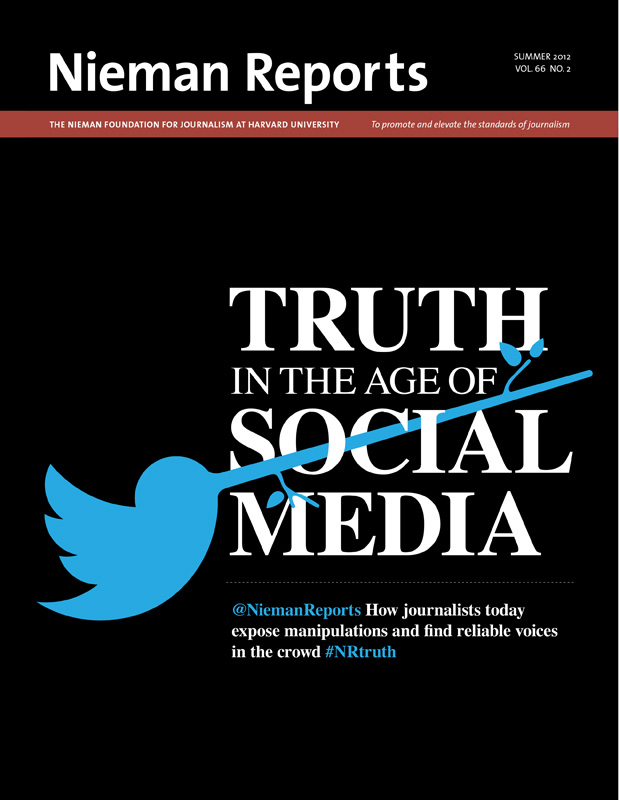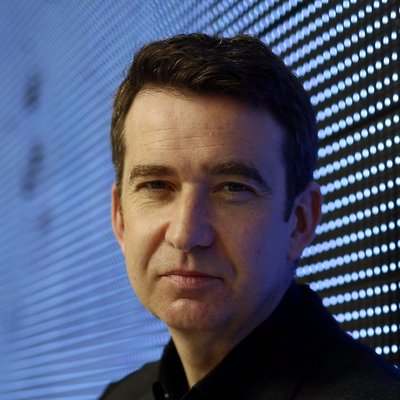When I was a young TV journalist, the phrase “golden hour” meant the early evening light that bathed faces and landscapes in a warm forgiving glow. As a social journalist, I’ve started to use the term in a different way.
I now think of the golden hour as the time it takes social media to create either an empowering truth or an unstoppable lie, when a celebrity death trends on Twitter or an explosive video surfaces on YouTube. In other words, when journalism can matter most.
When I founded Storyful in 2010, I imagined a news agency built for the social media age. I wanted to create the products and protocols that would equip other journalists to meet the challenges of the golden hour.
At Storyful, we think a combination of automation and human skill provides the broadest solution. We are a news agency but also a technology start-up. Our engineers work side by side with our journalists.
The Storyful development team is building products that will help our journalists and clients map influence and connections within social media conversations and get an early warning of changes in their speed or intensity.
We are also working to scale the techniques our editorial team has perfected in validating videos and images. At its core, this process is built around a checklist:
- Can we geo-locate this footage? Are there any landmarks that allow us to verify the location via Google Maps or Wikimapia?
- Are streetscapes similar to geo-located photos on Panoramio or Google Street View?
- Do weather conditions correspond with reports on that day?
- Are shadows consistent with the reported time of day?
- Do vehicle registration plates or traffic signs indicate the country or state?
- Do accents or dialects heard in a video tell us the location?
- Does it jibe with other imagery people are uploading from this location?
- Does the video reflect events as reported on Storyful’s curated Twitter lists or by local news sources?
This form of inquiry is as old as journalism itself, even if the technology is not. Our approach to authenticating sources is also drawn from the eternal values of storytelling. The Storyful team uses the phrase “human algorithm” to sum up its hybrid approach. Every news event in the age of social media creates a community. When news breaks, a network gathers to talk about the story. Some are witnesses, others are amplifiers, and in every group there are trusted filters.
The problem for journalists born into an age of elites is that these filters look nothing like our traditional sources, who are generally ranked on the basis of power and authority. Authority has been replaced by authenticity as the currency of social journalism. The key to engaging with a community is to seek out those closest to the story. They rarely have a title but are people of standing within a community. They are guides to the wisdom within their crowd and interpreters of nuance: if you are verifying video from Syria you don’t want a foreign policy wonk, you want someone who can distinguish between a Damascus and a Homs accent.
Our approach to rating sources and the video they upload revolves around another checklist:
- Where is this account registered and where is the uploader based, judging by his or her history?
- Are there other accounts—Twitter, Facebook, a blog, or website—affiliated with this uploader? How can they help us identify location, activity, reliability, bias and agenda?
- How long have these accounts been in existence? How active are they?
- Does the uploader write in slang or dialect that is identifiable in the video’s narration?
- Can we find WHOIS (domain registration) information for an affiliated website?
- Is the person listed in local directories? Does the person’s online social circles indicate a proximity to the story/location?
- Does the uploader “scrape” videos from news organizations and YouTube accounts?
- Are video descriptions dated? Does the title of the video have file extensions such as .AVI or .MP4?
- Are we familiar with this account? Has the content and reportage been reliable?
Reporters are taught never to expose their own ignorance but “I don’t know” is the starting point in any honest investigation of online communities and their content. Internally we consciously use the word “validation” instead of verification. Our role is to provide the essential context that will allow newsrooms to make informed judgments about content that may never be completely free of risk.
This does not mean that social journalists should not deliver judgments. It is not good enough to broadcast a user-generated video and then say it can’t be verified. You must tell us what you did to verify it and what context exists, if any. You are still a journalist.
Storyful has advantages in adjusting to the realities of social journalism. We don’t depend on ratings or traffic. Our mission is to help other journalists, particularly those who create the real value.
Storyful worked with ABC News to report the death of Osama bin Laden, discovering content and mapping key locations and images. But we were in no doubt that the person who really mattered on that day was Nick Schifrin, the correspondent in Pakistan.
When we work with clients like The New York Times, for example, our job is not to take the place of its reporters but to help turn user-generated content into something they can safely use. This may involve adding context to video for The Lede blog, building a Twitter list for a beat reporter or helping the picture desk find a corroborating source.
Where social journalists like us can provide a unique benefit is in our embrace of collaboration. It does not come naturally to journalists to risk their reputation by engaging with online communities. But there is no alternative in the golden hour.
I would go further: all news organizations need to radically reconsider their approach to each other. There really is no value in going it alone in the golden hour. If you do, the chance you will be consistently first is nonexistent. The chance that you will often be wrong is 100 percent.
Field reporters like me grew up with the reality of collaboration. In my days as a Washington correspondent, I relied on pool copy from the White House. In any war zone, my best friend was often my fiercest rival.
The very notion of the news agency stems from collaboration in a time of disruption. The Associated Press was the product of an historic partnership between New York’s five daily newspapers during the Mexican-American War of the 1840s.
We’re at that moment again. Faced with frightening disruption and stunning potential, journalists need to get comfortable with risk, transparency and collaboration. We need to abandon the notion that we have a monopoly on truth.
Not too long ago, reporters were the guardians of scarce facts delivered at an appointed time to a passive audience. Today we are the managers of an overabundance of information and content, discovered, verified and delivered in partnership with active communities.
What does that mean in practice? Technology will play its part but don’t underestimate that human algorithm. We need new protocols to shape collaboration between journalists and communities. Perhaps just as important is collaboration among journalists, inside and outside the traditional structures of news. I keep telling people we are entering a golden age of journalism. I truly believe that. But first we need to face up to the challenge of each golden hour.
Mark Little is founder and CEO of the social news agency Storyful.



